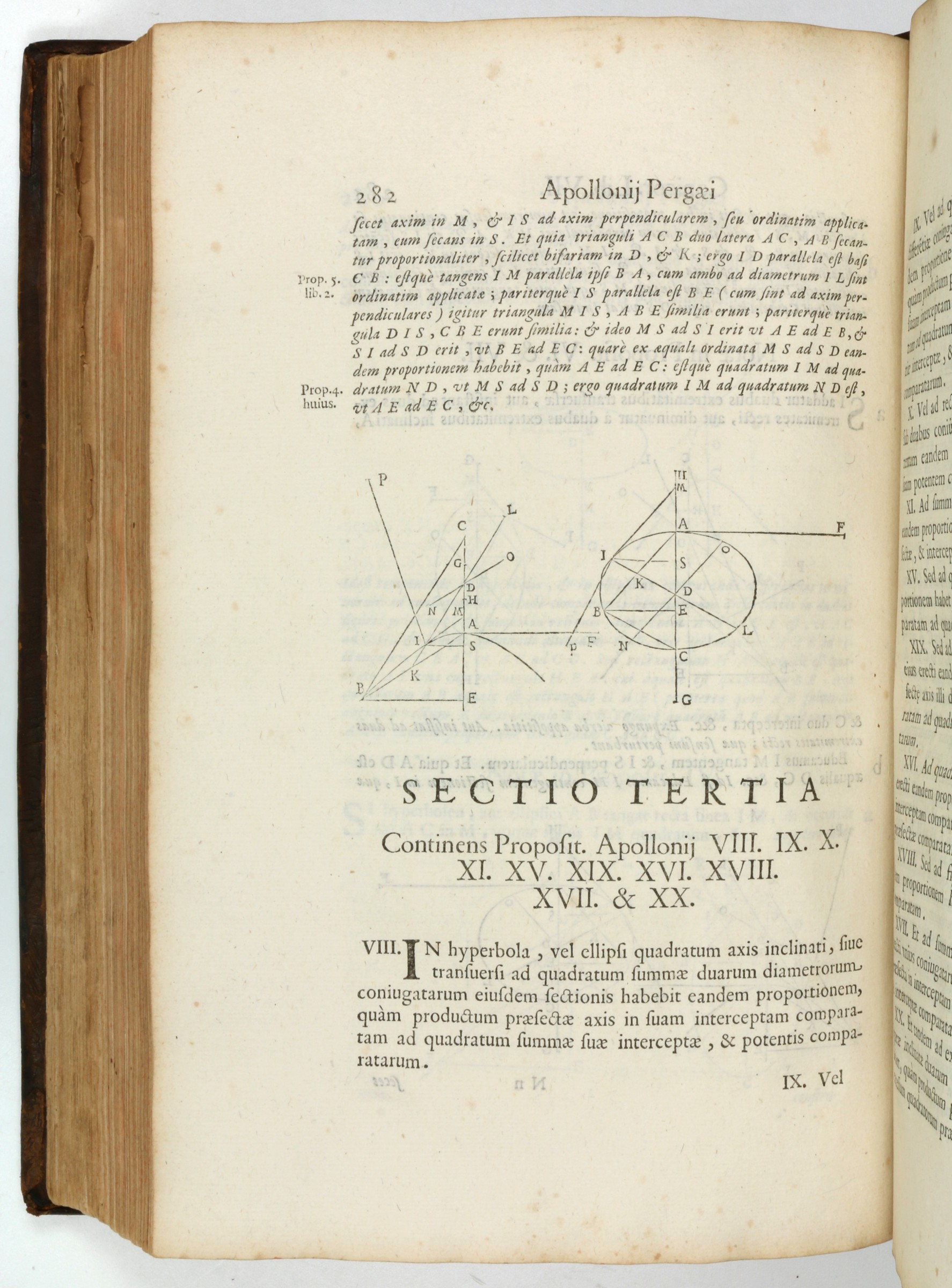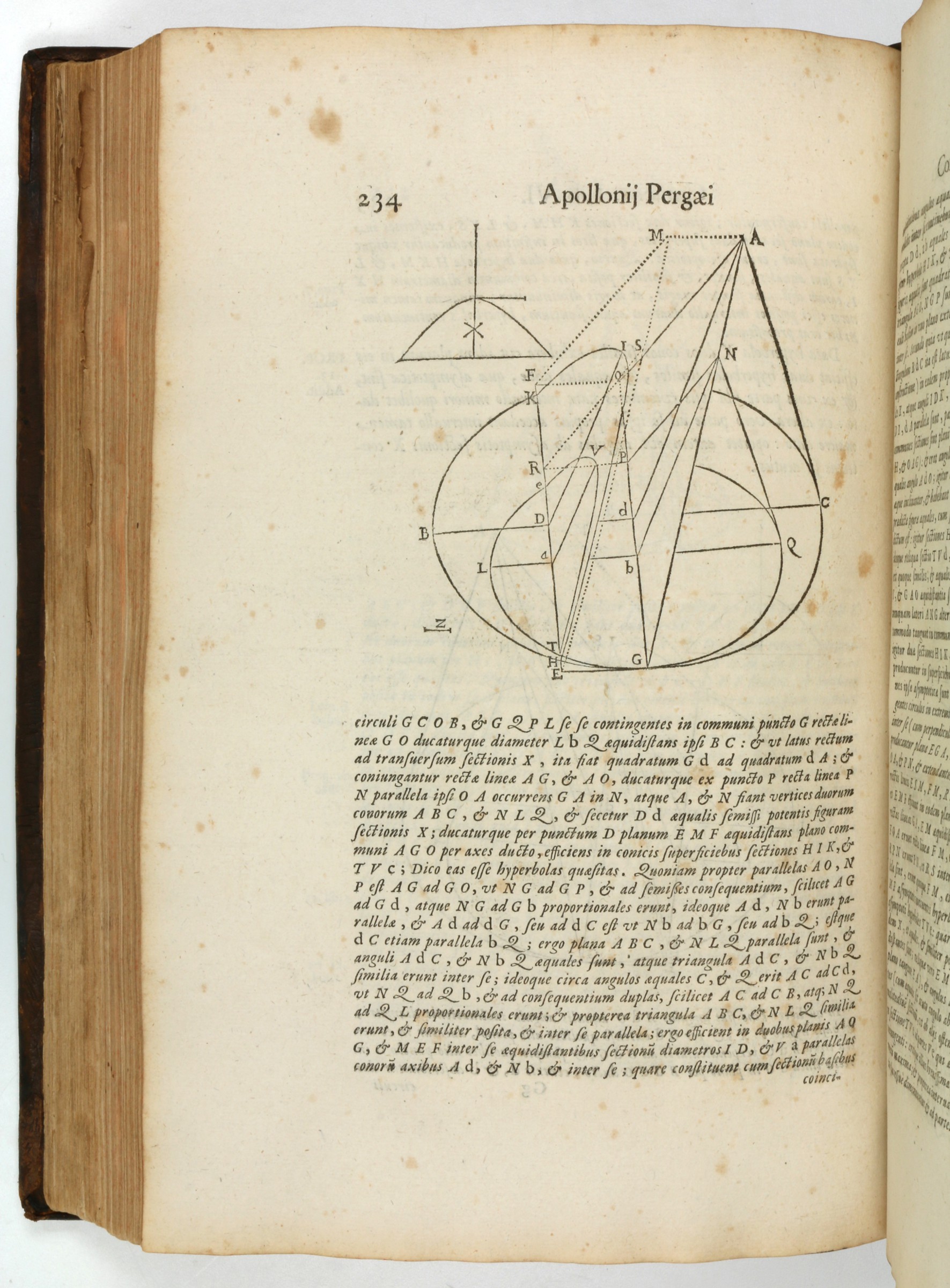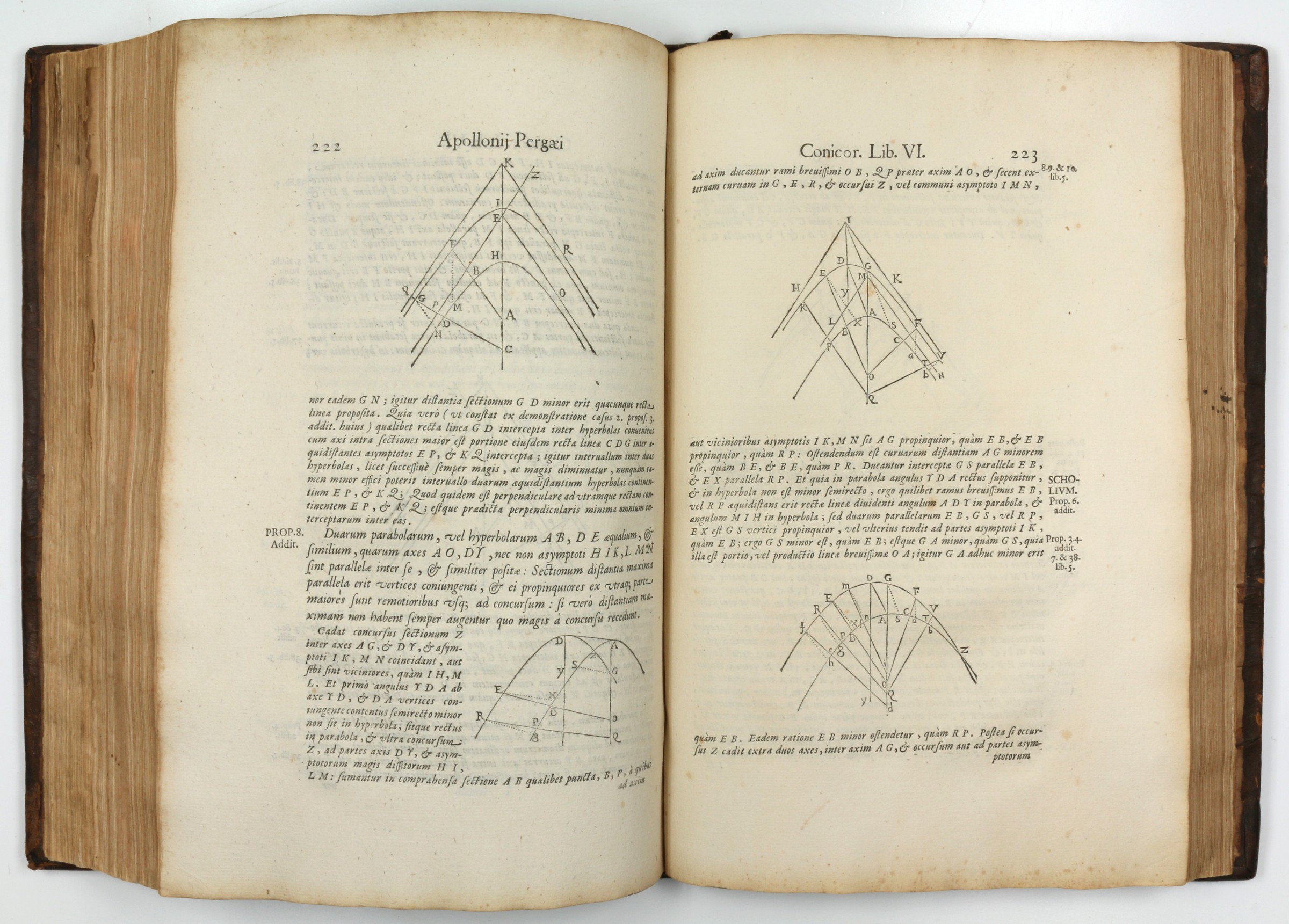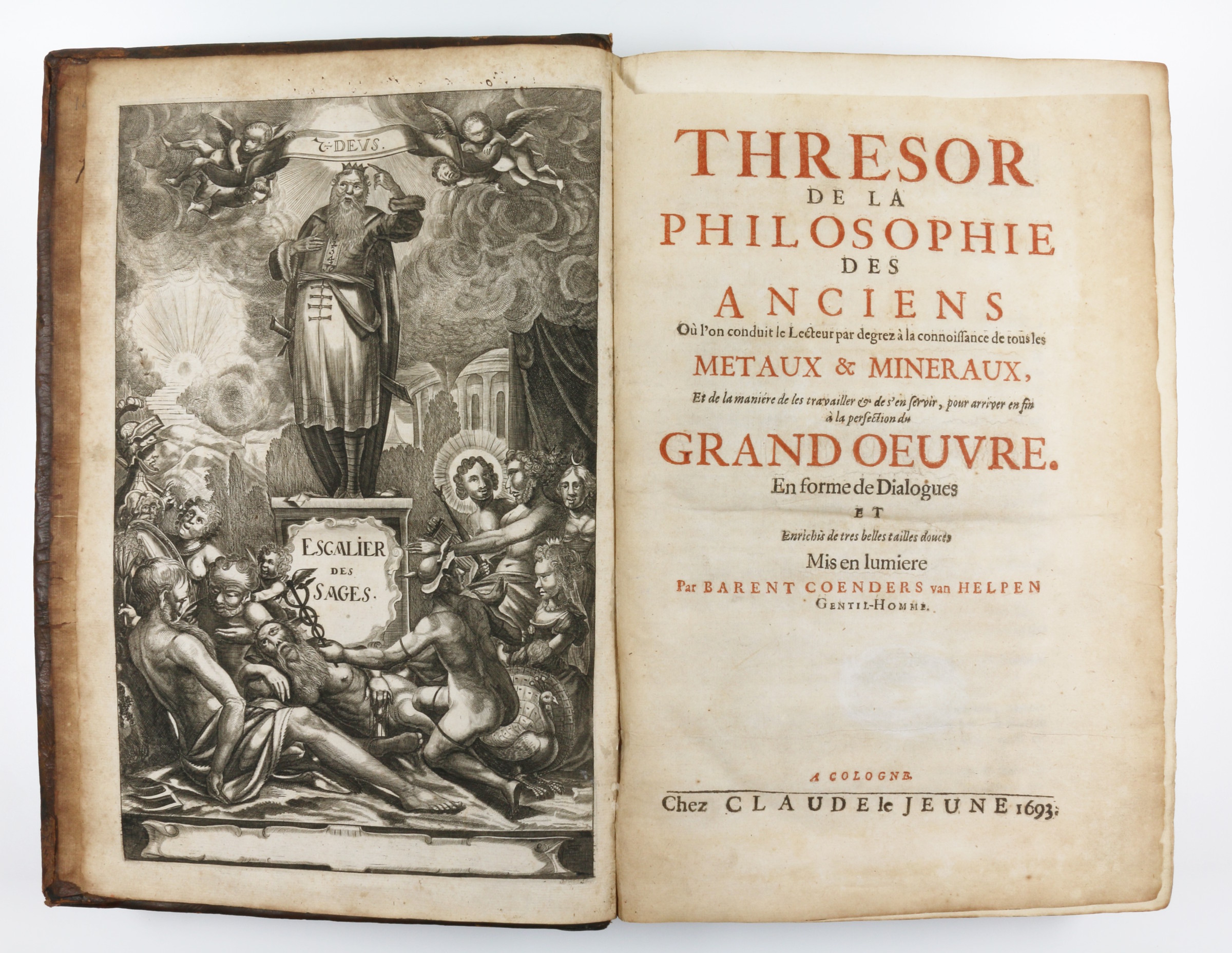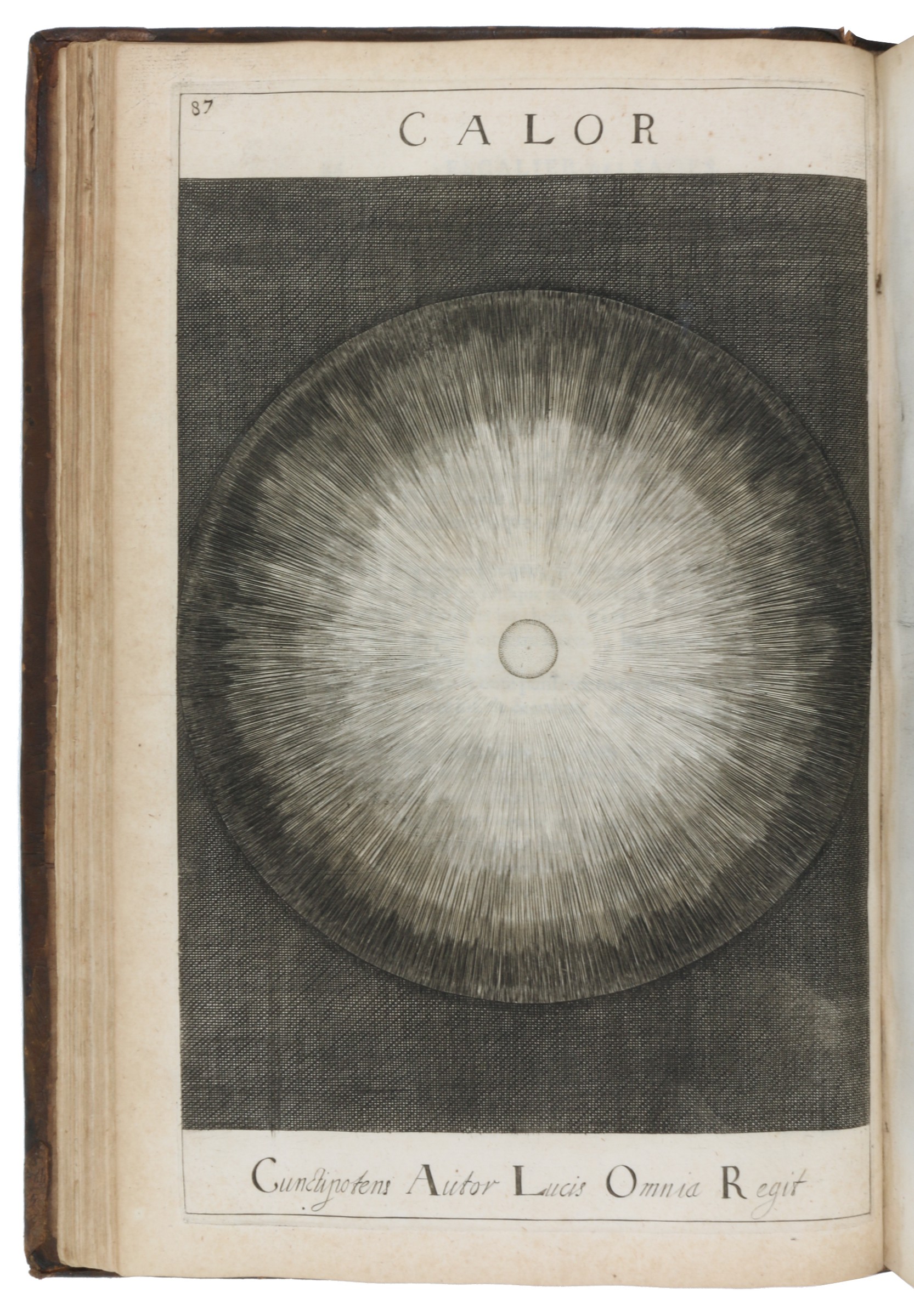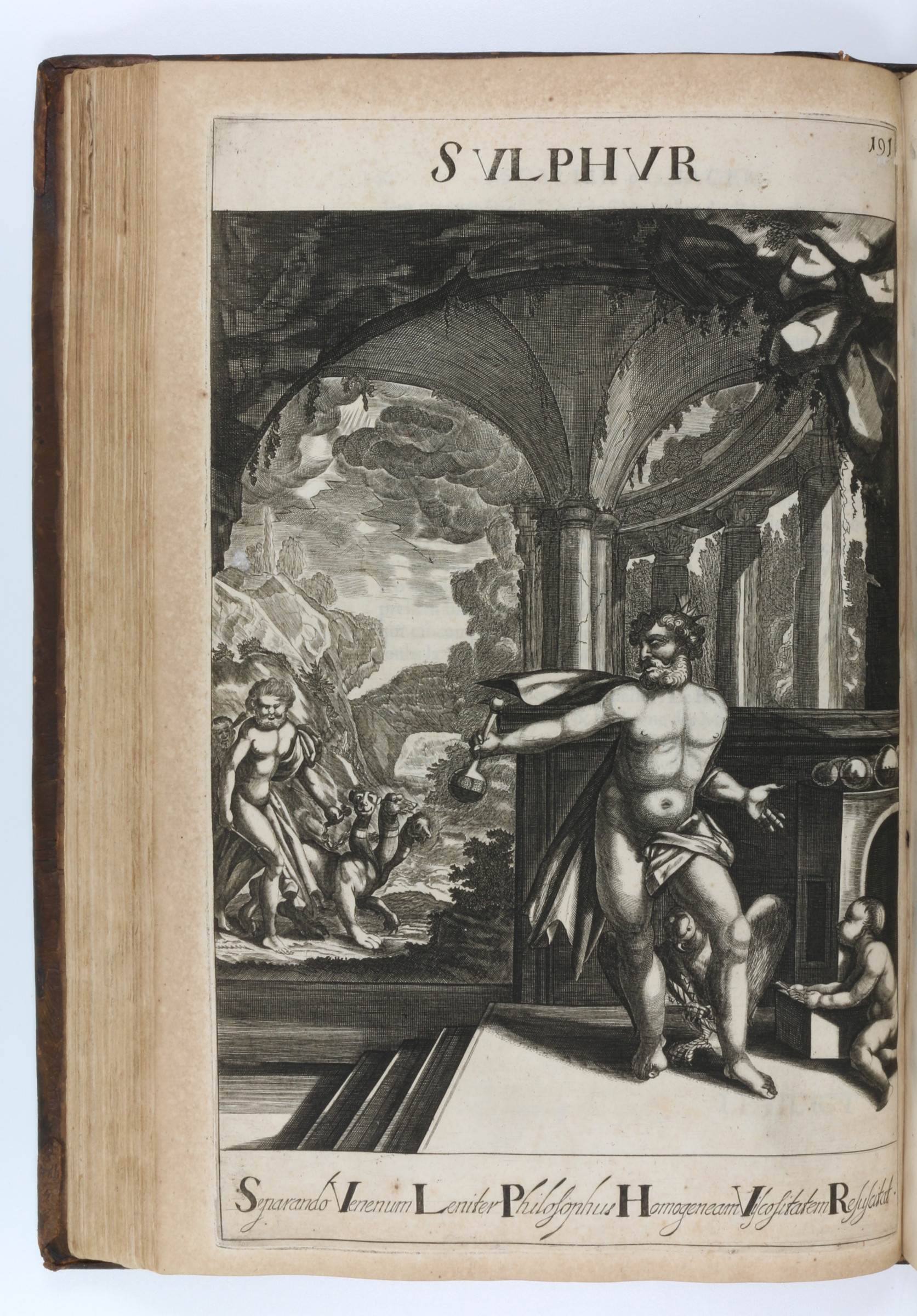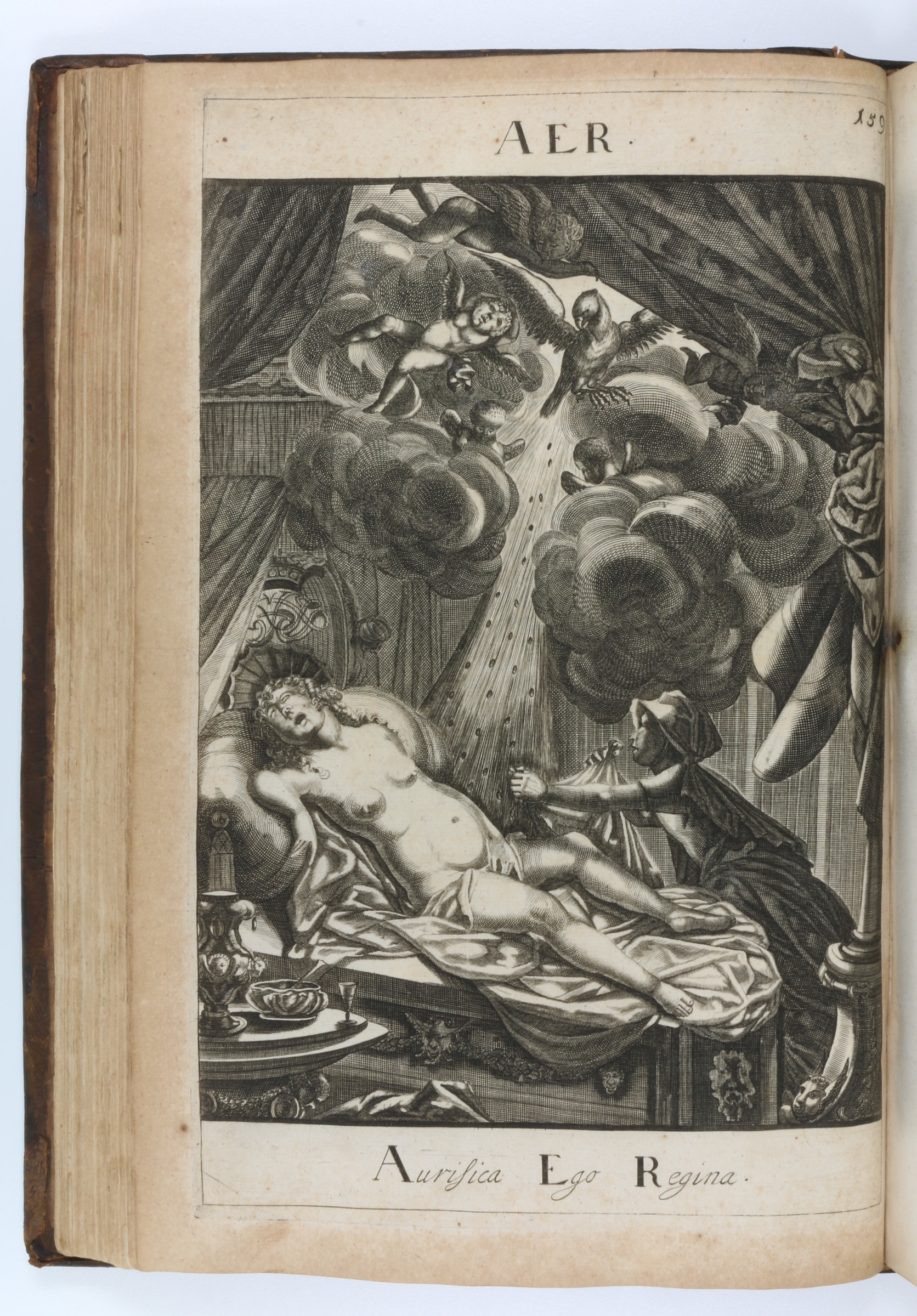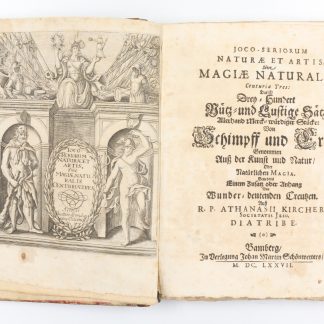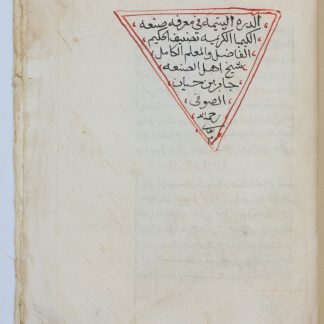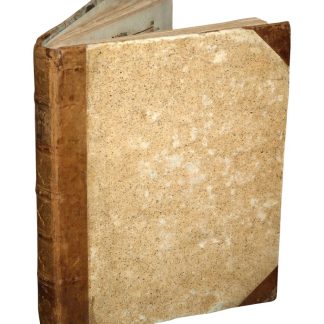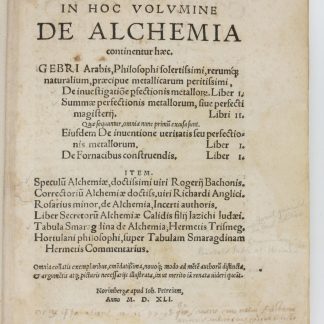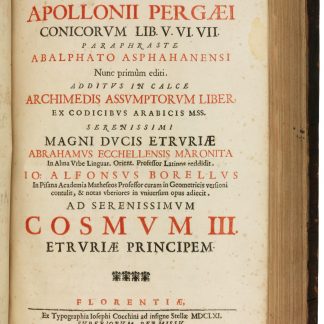Editio princeps
Conicorum lib[ri] V, VI, VII. Paraphraste Abalphato Asphahanensi nunc primum editi.
Folio (228 x 330 mm). (36), 415, (1) pp. Title-page printed in red and black. With hundreds of geometric figures in the text.
(Bound after) II: Coenders van Helpen, Barent. Thresor de la philosophie des anciens où l'on conduit le lecteur par degrez à la connaissance de tous les metaux & mineraux [...]. "Cologne" (i.e., Groningen), Claude le Jeune, 1693. (6), 240 pp. Title-page printed in red and black. With allegorical frontispiece ("Escalier des Sages"), woodcut ornaments, 12 allegorical plates, and 5 copper engraved plates with alchemical motifs. Contemporary smooth, deep auburn full calf with gilt ornamentation and traces of a label to spine.
€ 20,000.00
Editio princeps of books V, VI and VII of the "Conica", the most original part of Apollonius's fundamental work on conic sections. The text survives only in the Arabic manuscript of Abu 'l Fath of Ispahan, purchased by the Medici family in the first half of the 17th century and here translated and edited by Alfonso Borelli. "This was a valuable addition to the mathematical knowledge of the time, for whereas Books I-IV of the Conics dealt with information already known to Apollonius's predecessors, Books V-VII were largely original. Book V discusses normals to conics and contains Apollonius's proof for the construction of the evolute curve; Book VI treats congruent and similar conics and segments of conics; Book VII is concerned with propositions about inequalities between various functions of conjugate diameters" (Norman). "The fifth book is especially important treating of normals as minimum and maximum straight lines drawn from given points to the curve" (Honeyman). "The sixth book is on the similarity of conics. The seventh book is on conjugate diameters" (Cajori).
A fine, wide-margined copy. Bound first is the final edition of the "Thresor de la philosophie des anciens", a reference treatise for the theory and practice of alchemy, esotericism and hermetic philosophy that draws on Hermes Trismegistus, Paracelsus, and Sendivogius. Couched in the form of a dialogue, the book discusses the ten-step ascent to the single matter via two qualities, three principles, and four elements. The 17 remarkable allegorical plates depict alchemy, chaos, heat, love, the elements, sulphur, mercury, and salt. The Groningen politician Coenders (1601-78) first published this rare work in 1686.
Occasional light browning; title-page trimmed along top edge. Binding a little rubbed at extremeties, spine-end professionally repaired, but an appealing volume.
I: Norman 58. Honeyman 119. De Vitry 29. Sarton I, 173-175. DSB I, 179-193 (Apollonius) & II, 308f. (Borelli). Cajori, A History of Mathematics, pp. 40f. DBI XII, 546. Riccardi I, 158 ("bella edizione, ed assai ricercata").
II: VD 17, 7:651937N. Caillet 2419. Duveen 287. Verginelli 74. Brüning II, 2718. Brunet II, 1052.



